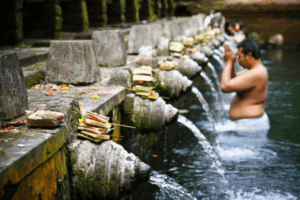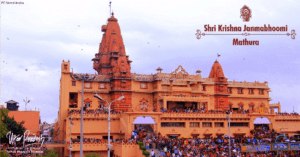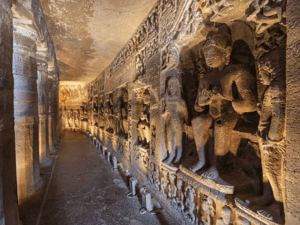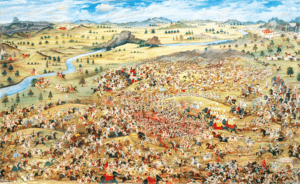
Introduction:
Nestled in the picturesque foothills of the Himalayas, Shimla stands as a testament to the passage of time, bearing witness to centuries of history and transformation. From its humble beginnings as an ancient village to its present-day status as a sought-after tourist destination, Shimla’s journey is a captivating tale of growth, cultural fusion, and resilience.
Ancient Origins and Indigenous Roots:
Shimla’s history dates back to ancient times, when indigenous tribes inhabited the region. Situated along trade routes connecting the Indian plains with Tibet, the area served as a crossroads for cultural exchange and commerce. While details about this period remain limited, Shimla’s role as a hub for regional interaction laid the foundation for its future significance.

Rise of Local Powers and Dynasties:
During the 17th and 18th centuries, Shimla came under the influence of various local rulers, including the Rajas of Bushahr. These rulers left their marks on the landscape, fostering a blend of architectural styles and cultural traditions that shaped the region’s identity.

British Exploration and Colonial Era:
It wasn’t until the 19th century that Shimla’s destiny took a dramatic turn. The British East India Company recognized the potential of the region’s cool climate as a respite from the Indian summer heat. Following the Anglo-Nepalese wars, the British took control of the area and transformed it into a summer retreat. The Viceregal Lodge, a majestic symbol of British architecture, and the Kalka-Shimla railway, a feat of engineering, stand as enduring testaments to this period.

Evolution into a Hill Station:
As the British established Shimla as the summer capital of India, the town underwent a remarkable transformation. Colonial-era buildings and institutions arose, dotting the landscape with their elegant architecture. Shimla’s rise to prominence was also marked by the establishment of educational and administrative institutions that shaped the region’s modern identity.

Post-Independence and Modern Development:
With India’s independence in 1947, Shimla continued to flourish. It became the capital of Himachal Pradesh, a new state formed from various princely states. While retaining its colonial charm, Shimla expanded to accommodate the growing influx of tourists. The city’s economy flourished due to its enchanting landscapes, cultural heritage, and a burgeoning hospitality industry.

Tourism and Sustainability Challenges:
Present-day Shimla is synonymous with tourism. Visitors are drawn to its blend of historical grandeur and natural beauty, exploring the Viceregal Lodge, the Mall Road, and nearby attractions. However, with growth comes challenges. The city grapples with issues like water scarcity, waste management, and preserving its ecosystem. Efforts to strike a balance between development and sustainability are ongoing.

City Planning Woes
Shimla, with its narrow winding roads, hilly terrain, and colonial-era architecture, presents unique urban planning challenges. The unplanned and haphazard growth of the city over the years has led to congestion, inadequate infrastructure, and environmental degradation. The city’s unplanned expansion has put immense pressure on resources, including water supply and waste management, resulting in severe strain on the ecosystem.

The historic heritage of Shimla, with its British-era buildings and structures, necessitates a delicate balance between preserving the past and catering to the demands of modern urbanization. A lack of comprehensive zoning regulations has led to unchecked construction, often at the cost of the city’s historical character and structural stability.
Conclusion:
The story of Shimla is one of resilience, adaptation, and growth. From its humble origins as an ancient village to its transformation into a British summer capital and finally a modern tourist haven, Shimla has woven together diverse threads of history. As we embrace the city’s past while striving for a sustainable future, we celebrate its role as a living testament to the remarkable journey of a place that has captivated hearts for generations.







